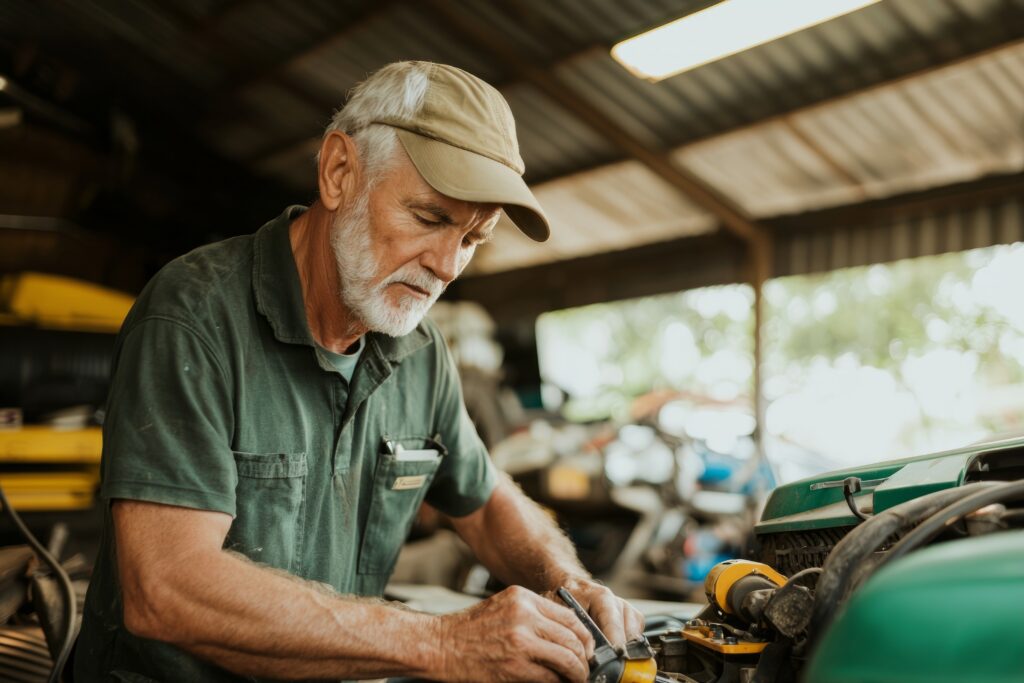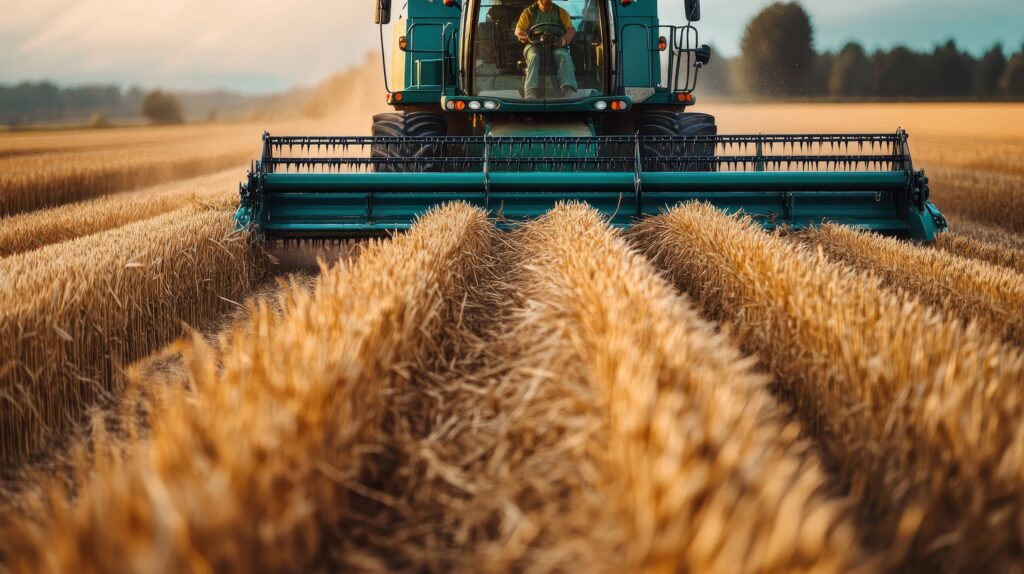A Beginner’s Guide To Farming Equipment And Supplies
Table of Contents
- Introduction
- Understanding the Role of Farming Equipment
- Basic Hand Tools Every Beginner Needs
- Machinery for Larger-Scale Operations
- Equipment for Animal Farming
- Irrigation and Water Management
- Storage and Handling Equipment
- Safety Equipment on the Farm
- Where to Find Quality Supplies
- Tips for Choosing the Right Equipment
- Maintenance and Care for Longevity
- Conclusion
Farming is a rewarding yet demanding profession. It requires the right tools, careful planning, and consistent upkeep to ensure that crops grow well and animals stay healthy. Whether starting a small backyard farm or managing several acres of land, understanding the basics of farming equipment and supplies is essential. Each tool serves a specific role in planting, nurturing, or harvesting. With the right knowledge, even beginners can make informed choices and get off to a strong start in farming.
Understanding the Role of Farming Equipment
Farming equipment plays a key role in reducing manual labor and increasing productivity. These tools help with planting, watering, harvesting, and even caring for animals. While traditional tools like hoes and rakes still have their place, modern agricultural equipment makes it easier to manage larger plots of land efficiently. Choosing the right tools from a trusted farming equipment supplier depends on the type of farm, the size of the land, and the kind of crops or animals being raised.
For example, someone growing vegetables on a small piece of land may only need hand tools, while a person managing several acres will likely need tractors and other machinery. Investing in the right equipment from the start can prevent future setbacks and reduce costs over time.
Basic Hand Tools Every Beginner Needs
Starting with simple tools is often the best approach for beginners. These tools are easy to use, budget-friendly, and essential for day-to-day tasks.
1. Shovel
A shovel is useful for digging, moving soil, and planting. It’s a must-have for creating garden beds or digging holes for trees.
2. Hoe
This tool is ideal for loosening soil and removing weeds. A hoe helps prepare the land before planting and keeps the soil around crops well-aerated.
3. Rake
Rakes help level soil and remove debris like rocks, leaves, or weeds. Garden rakes with stiff metal tines work best for heavier tasks, while leaf rakes are good for lighter cleanup.
4. Pruners and Shears
For those growing fruit trees or vegetables, pruners are essential for cutting dead branches or trimming plants to promote healthy growth.
5. Watering Can or Hose
Plants need regular watering, especially in dry seasons. A sturdy watering can or hose ensures that each plant gets enough water without waste.
These hand tools are enough to maintain a small garden or backyard plot. Over time, more tools can be added based on specific needs.
Machinery for Larger-Scale Operations
As farms grow, so do the demands. Manual labor alone can become exhausting and time-consuming. This is where machinery becomes valuable.
Tractors
Tractors are one of the most important machines on a farm. They come in different sizes and can be used for plowing, tilling, seeding, and even transporting loads. Compact tractors are suitable for small to medium-sized farms, while larger models are needed for commercial-scale agriculture.
Plows and Tillers
Plows are used to break up and turn over soil before planting. They create rows and loosen the earth, making it easier for seeds to take root. Tillers do similar work but are often lighter and more suited to garden-sized areas.
Seeders and Planters
These machines automate the sowing process. They drop seeds into the soil at even intervals and proper depths. This saves time and ensures better crop spacing, leading to healthier plants.
Harvesters
When the time comes to collect crops, harvesters can make a big difference. Grain, fruit, and vegetable harvesters reduce manual work and help prevent waste.
Utility Vehicles
In addition to standard machinery, utility vehicles like ATVs or small trucks help transport tools, feed, or produce. They improve mobility around larger farms and save time during busy seasons.
Equipment for Animal Farming
If the goal is to raise livestock, a different set of equipment is needed. Feeding, housing, and health care require proper tools and systems.
Feeding Equipment
Feed troughs, buckets, and automatic feeders help deliver food efficiently. For larger animals like cattle, larger troughs and water tanks are needed. For chickens or pigs, smaller feeders are more suitable.
Housing Supplies
Shelters must be built using durable materials to keep animals safe from weather and predators. Ventilation fans, heating lamps, and bedding materials like straw or sawdust also play important roles in animal comfort and health.
Fencing and Gates
Keeping animals secure requires reliable fencing. Electric fences are often used for cattle or sheep, while chicken wire is better suited for poultry. Gates should be easy to open but strong enough to keep animals from escaping.
Veterinary Tools
Basic veterinary supplies like thermometers, syringes, and grooming kits help maintain animal health. Having these on hand ensures quick responses to minor illnesses or injuries.
Milking and Egg Collection
For those keeping dairy animals or poultry, specialized equipment for milking or collecting eggs is useful. Automatic milking machines improve hygiene and speed, while egg trays and nesting boxes keep poultry operations clean and organized.
Irrigation and Water Management
Water is vital for both crops and animals. Managing it efficiently helps prevent waste and ensures everything on the farm gets what it needs.
Drip Irrigation
Drip systems deliver water directly to the base of plants. This method saves water and prevents overwatering, which can harm root systems.
Sprinkler Systems
Sprinklers are useful for watering larger fields. They can be set on timers to ensure consistent watering throughout the week.
Rainwater Harvesting
Collecting rainwater in barrels or tanks is a sustainable way to supplement farm water supply. This can be useful during dry spells or in regions with limited access to clean water.
Pumps and Water Storage
Pumps help move water from wells or ponds to where it’s needed. Large water tanks or reservoirs allow farmers to store water during rainy seasons and use it when the supply drops.
Storage and Handling Equipment
Storage plays a big role in keeping equipment, crops, and supplies organized and safe.
Tool Storage
Keeping tools in a dry, locked shed prevents rust and damage. Pegboards and toolboxes help maintain order and easy access.
Produce Storage
Fresh produce needs to be stored in cool, dry conditions to prevent spoilage. Simple crates, baskets, and cold rooms can help preserve quality before crops are sold or consumed.
Animal Feed Storage
Feed should be stored in containers with tight lids to keep out pests and moisture. Raised platforms can help avoid spoilage from damp ground.
Waste Disposal
Compost bins, manure spreaders, and waste management tools reduce environmental impact and keep the farm clean. Proper waste handling also supports better soil health and reduces disease risks.
Safety Equipment on the Farm
Safety is often overlooked but should never be ignored. Farming involves sharp tools, heavy machinery, and physical labor.
Protective Gear
Gloves, boots, goggles, and ear protection are basic safety items. When using chemicals or pesticides, masks and long sleeves are also important.
First Aid Kit
Every farm should have a first aid kit that includes bandages, antiseptic, tweezers, and burn cream. Accidents can happen anytime, and being prepared can reduce the risk of serious harm.
Fire Safety
For farms with machinery, fuel, and dry materials, having fire extinguishers on hand is essential. Safe storage of fuel and proper wiring reduces fire hazards.
Equipment Manuals and Training
Reading equipment manuals and offering basic training ensures that tools and machines are used correctly. Clear instructions reduce injury risks and improve efficiency.
Where to Find Quality Supplies
Finding the right equipment and supplies doesn’t always mean buying the most expensive options. There are many places where beginners can find quality tools at fair prices.
Farm Supply Stores
These stores offer a wide range of tools, from hand tools to large equipment. Staff often have useful advice for first-time buyers.
Online Retailers
Websites make it easy to compare prices and read reviews. Some offer delivery services, which is convenient for those in remote areas.
Local Auctions and Second-Hand Markets
Used equipment in good condition can be found at local auctions or farm sales. These are great for saving money, especially on larger machinery.
Cooperative Groups
Some communities form cooperatives to share tools and machinery. This reduces individual costs and allows small farmers to access more advanced equipment without a large investment.
Tips for Choosing the Right Equipment
With so many choices, it’s easy to feel overwhelmed. However, a few tips can help guide new farmers toward the right options.
- Start small: Buy only what’s necessary and expand as the farm grows.
- Consider quality: Well-built tools last longer, even if they cost more upfront.
- Ask for recommendations: Fellow farmers or local experts can offer advice based on experience.
- Keep maintenance in mind: Choose tools and machines that are easy to clean, fix, and store.
- Think about storage: Consider where and how equipment will be stored during off-seasons.
Planning and budgeting wisely will help avoid unnecessary expenses and keep operations running smoothly.
Maintenance and Care for Longevity

Taking care of farming tools is just as important as choosing the right ones. Well-maintained equipment lasts longer, works better, and reduces unexpected breakdowns.
- Clean after each use: Removing dirt and moisture prevents rust and wear.
- Store properly: Keep tools in a dry place and shield them from extreme temperatures.
- Sharpen blades regularly: Tools like hoes, shears, and pruners work better when kept sharp.
- Service machines on schedule: Tractors, tillers, and other machines need oil changes and part replacements over time.
- Inspect frequently: Check belts, hoses, and moving parts before each use to avoid surprise malfunctions.
Regular upkeep is part of responsible farming. It saves money and keeps the operation on track.
Conclusion
Getting started in farming doesn’t require buying every tool on the market. With a clear plan and the right basic equipment, anyone can begin their journey with confidence. Learning how each tool supports daily farm tasks helps beginners become more efficient and organized. Whether managing crops, raising animals, or both, understanding farming equipment and supplies forms the foundation of a successful farm. With time, experience, and good care of tools, farming can become both productive and rewarding.





